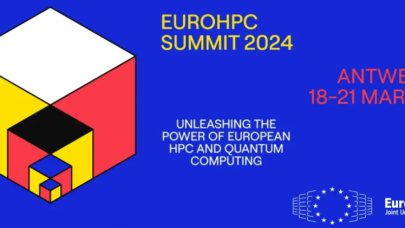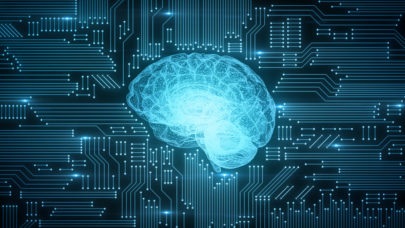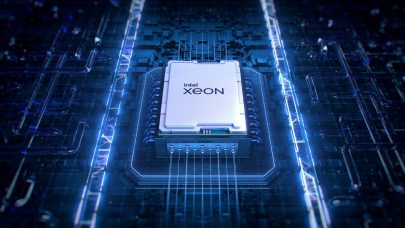April 17, 2019 — Blue Waters researcher Claire Porter received the National Oceanic and Atmospheric Administration (NOAA) David Johnson Award for her work as project manager and lead developer of the ArcticDEM project.
This award is given to young professionals who “developed an innovative application of Earth observation satellite data that is, or could be, used for operational purposes to assess and/or predict atmospheric, oceanic, or terrestrial conditions.” Porter and the ArcticDEM team use stereoscopic images from satellite data leveraging the high-resolution images with the Blue Waters supercomputer at the National Center for Supercomputing Applications(NCSA) to create digital elevation models (DEMs) to map the Arctic, the Antarctic, and soon, the entire world.
And this data is readily available to the public—free of charge.
“This particular project pairs old technology using stereoscopic images in a way that is free for us to use and distribute,” said Porter. “Nobody ever thought that this could be done at this scale, because of the compute time needed.” In addition to the unique caliber of the research coming out of ArcticDEM, the use of the Blue Waters supercomputer was also unique. By using a sub-scheduler to keep up with the around-the-clock data processing needed to keep up with the flow of the data, ArcticDEM was able to meet the pressing deadline set forth by the White House in 2015.
“The Blue Waters team moved heaven and Earth for us to process our data on this supercomputer, even though it wasn’t designed for it,” said Porter, “they worked very hard to come up with a sub-scheduler to work in the larger ecosystem of a big job, so we always run in very efficiently. Otherwise, there is no way we could have achieved this goal in the timeframe we were given without Blue Waters and NSF.”
“Claire and the other staff at the Polar Geospatial Center had been fantastic to work with. It took a lot of effort and innovation on both sides to make processing this amount of data very efficient. The outcomes are also a testament to how balanced, well-designed supercomputers such as Blue Waters, can enable new paradigms in both the simulation and data analysis domains – all at the same time.” said Bill Kramer, the Blue Waters Principal Investigator.
“ArcticDEM has been a fantastic resource for modeling changes in the Arctic and the Antarctic, so we’ve now expanded our mission to map the entire world with EarthDEM,” said Porter. EarthDEM began in September 2018, and is key for mapping and monitoring locations where rapid change is occurring but airborne campaigns cannot reach, for example, in the Himalayas.
The opportunities and applications are endless with EarthDEM. Scientists can track river erosion, deforestation, coastal erosion, volcanic activity, and give key insights into disasters. “With EarthDEM, we will be able to see before shots of where disasters occur, and after. This is why it is so key for us to not be on hold and start targeting areas of major geological change across the globe,” said Porter.
“What I love about this project is that I get to take a federal resource and open source software, and turn it in to some of the most valuable data sets of the Arctic. I never doubted that ArcticDEM was so significant and deserved an award like this, and I’m proud to be a part of it.”
The NOAA David Johnson Award is presented by the National Space Club in honor of the first Administrator of what was to become the National Oceanic and Atmospheric Administration (NOAA), National Environmental Satellite, Data, and Information Service (NESDIS).
ABOUT BLUE WATERS
The Blue Waters petascale supercomputer is one of the most powerful supercomputers in the world, and is the fastest sustained supercomputer on a university campus. Blue Waters uses hundreds of thousands of computational cores to achieve peak performance of more than 13 quadrillion calculations per second. Blue Waters has more memory and faster data storage than any other open system in the world. Scientists and engineers across the country use the computing and data power of Blue Waters to tackle a wide range of challenges. Recent advances that were not possible without these resources include computationally designing the first set of antibody prototypes to detect the Ebola virus, simulating the HIV capsid, visualizing the formation of the first galaxies and exploding stars, and understanding how the layout of a city can impact supercell thunderstorms.
Blue Waters is supported by the National Science Foundation through awards ACI-0725070 and ACI-1238993.
ABOUT NCSA
The National Center for Supercomputing Applications (NCSA) at the University of Illinois at Urbana-Champaign provides supercomputing and advanced digital resources for the nation’s science enterprise. At NCSA, University of Illinois faculty, staff, students, and collaborators from around the globe use advanced digital resources to address research grand challenges for the benefit of science and society. NCSA has been advancing one third of the Fortune 50 for more than 30 years by bringing industry, researchers, and students together to solve grand challenges at rapid speed and scale.
Source: NCSA



























































